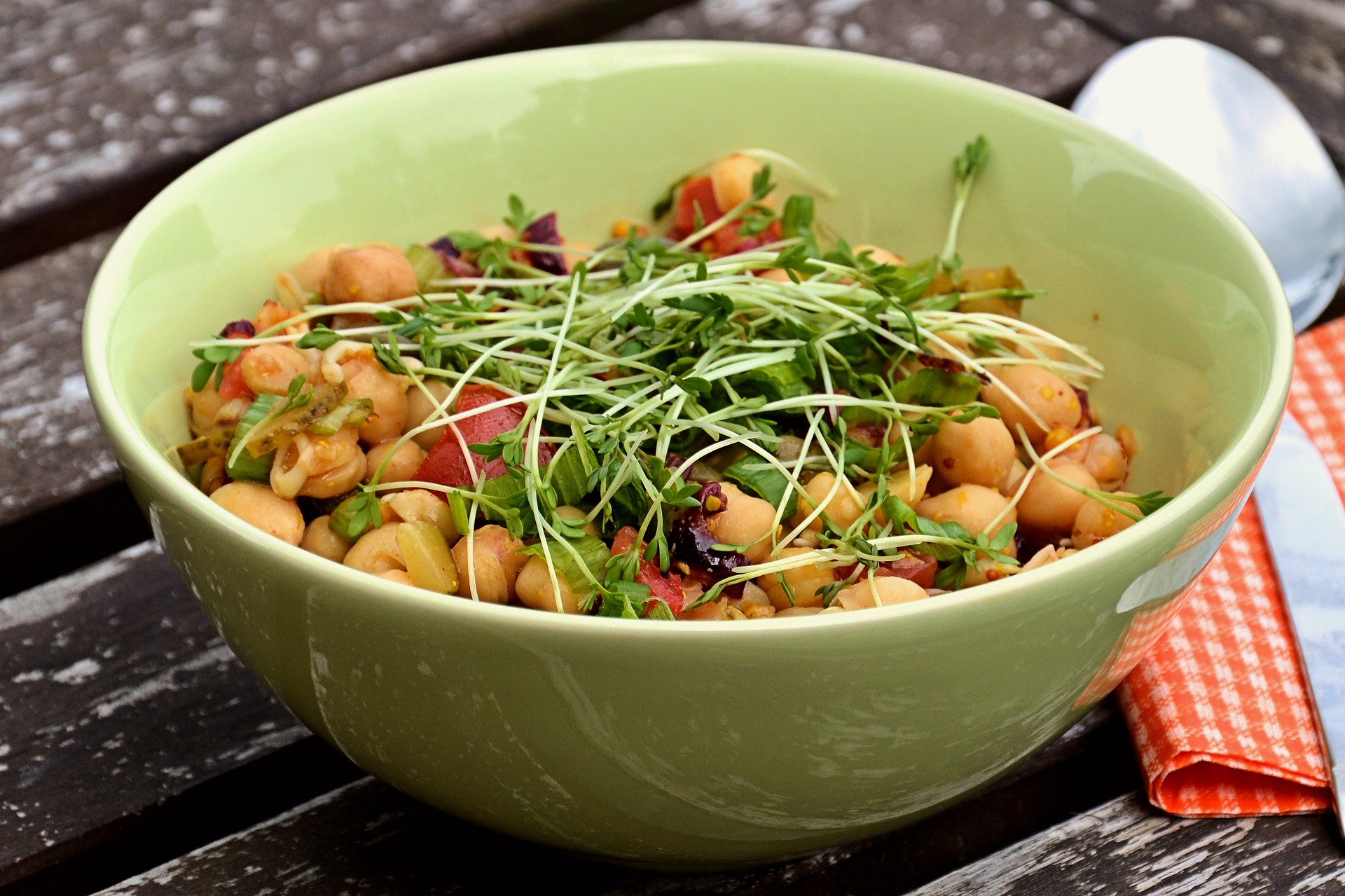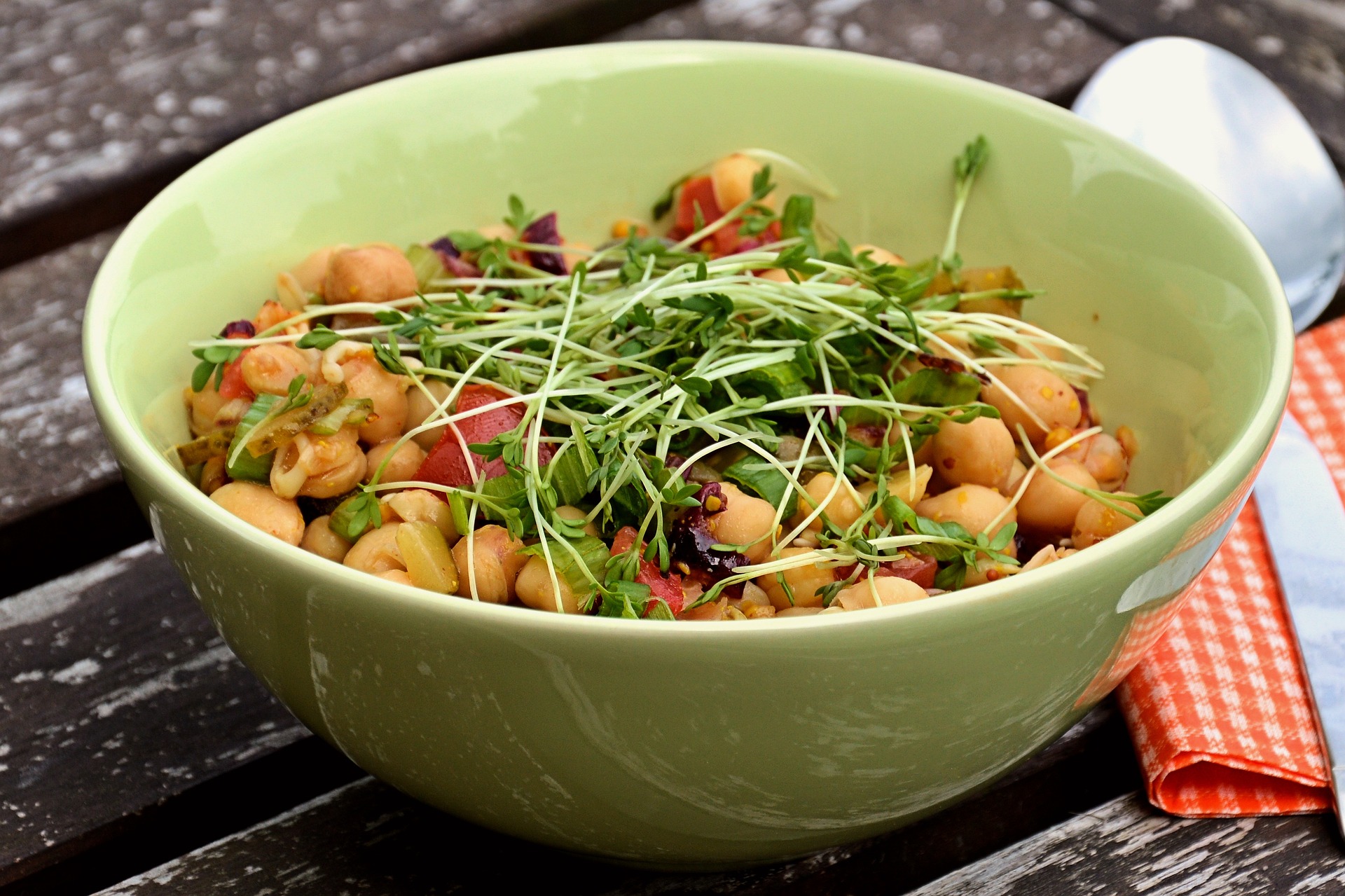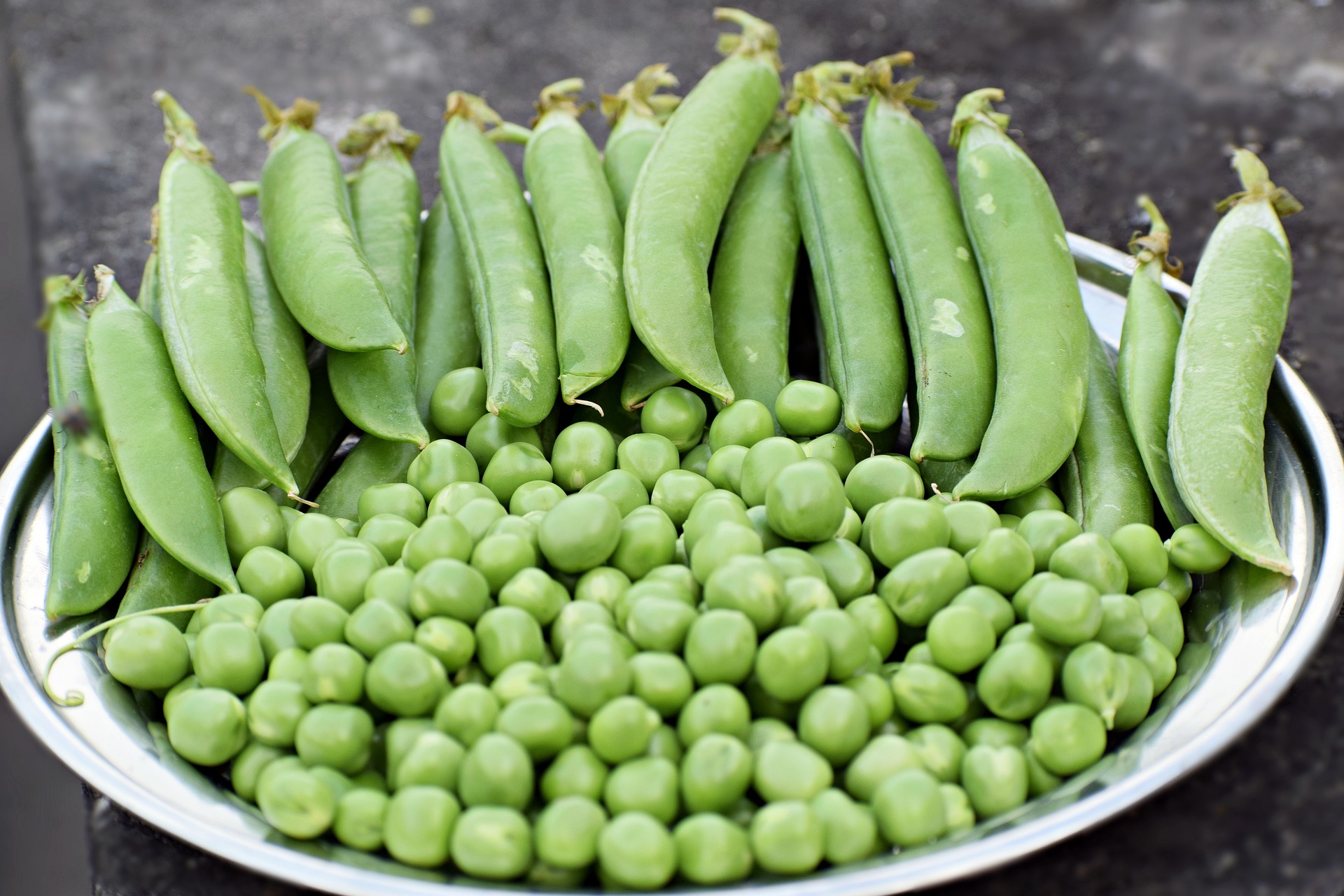Chickpeas: A Versatile and Nutritious Legume

Chickpeas, also known as garbanzo beans, are a popular legume enjoyed around the world for their versatility and nutritional value. These small, round beans are packed with protein, fiber, and essential nutrients, making them a valuable addition to a balanced diet. In this article, we will explore the nutritional benefits of chickpeas, their potential health benefits, and creative ways to incorporate them into your meals. Let’s dive into the world of chickpeas and discover why they are a fantastic ingredient to include in your culinary repertoire!
Introduction
Chickpeas, scientifically known as Cicer arietinum, have a rich history and are believed to have originated in the Middle East. They are now widely cultivated and cherished in various cuisines worldwide. Chickpeas are versatile legumes that can be enjoyed in both savory and sweet dishes, offering a unique texture and a nutty flavor.
Nutritional Composition of Chickpeas
Chickpeas are nutrient-dense and provide an array of essential nutrients. A one-cup (164 grams) serving of cooked chickpeas contains approximately:
– Calories: 269
– Carbohydrates: 45 grams
– Protein: 15 grams
– Fiber: 13 grams
– Fat: 4 grams
– Folate: 71% of the Recommended Daily Intake (RDI)
– Iron: 26% of the RDI
– Phosphorus: 28% of the RDI
– Magnesium: 20% of the RDI
– Potassium: 14% of the RDI

Health Benefits of Chickpeas
High in Protein and Fiber
Chickpeas are a fantastic plant-based source of both protein and fiber. Protein is essential for building and repairing tissues, while fiber plays a crucial role in supporting a healthy digestive system. The combination of protein and fiber in chickpeas can help promote feelings of fullness, support weight management, and regulate blood sugar levels.
Rich in Essential Minerals
Chickpeas are abundant in essential minerals that contribute to overall health. They are particularly high in folate, iron, phosphorus, and magnesium. Folate is important for cell division and DNA synthesis, while iron is crucial for oxygen transport within the body. Phosphorus and magnesium are essential for bone health, energy production, and maintaining healthy blood pressure levels.
Heart Health
Including chickpeas in your diet can contribute to heart health. The fiber content in chickpeas helps lower LDL (bad) cholesterol levels, reducing the risk of heart disease. Chickpeas are also a good source of potassium, a mineral that helps regulate blood pressure. Additionally, their antioxidant properties may help reduce inflammation and oxidative stress, both of which are associated with heart disease.
Blood Sugar Regulation
Chickpeas have a low glycemic index, meaning they are digested and absorbed slowly, resulting in a gradual release of sugars into the bloodstream. This slow digestion, coupled with their high fiber content, can help regulate blood sugar levels and improve insulin sensitivity. Incorporating chickpeas into meals may be beneficial for individuals with diabetes or those aiming to manage their blood sugar levels.
Digestive Health
The fiber in chickpeas supports a healthy digestive system. It adds bulk to the stool, promotes regular bowel movements, and helps prevent constipation. The fiber also acts as a prebiotic, nourishing the beneficial bacteria in the gut and contributing to a healthy gut microbiome. Including chickpeas in your diet can support digestive health and promote a balanced gut environment.
Ways to Enjoy Chickpeas
Chickpeas can be enjoyed in various delicious ways, both as a standalone ingredient or as part of a dish. Here are some popular ways to enjoy chickpeas:
Roasted Chickpea Snacks
Roasted chickpeas make a flavorful and satisfying snack. Toss cooked chickpeas with olive oil and your preferred seasonings, such as cumin, paprika, or garlic powder. Roast them in the oven until crispy for a nutritious alternative to processed snacks.
Hummus
Hummus, a creamy dip made from chickpeas, is a beloved Middle Eastern staple. Blend cooked chickpeas with tahini, garlic, lemon juice, and olive oil until smooth. Enjoy hummus as a dip for fresh vegetables, spread it on sandwiches, or use it as a flavorful topping for salads and grain bowls.
Chickpea Salads
Chickpeas make a wonderful addition to salads, adding texture, protein, and fiber. Combine cooked chickpeas with fresh vegetables, such as cucumbers, tomatoes, and bell peppers. Toss with a lemon-herb dressing for a refreshing and nutritious salad.
Chickpea Curry and Stews
Chickpeas are a popular ingredient in curries and stews, adding heartiness and flavor. Simmer chickpeas with aromatic spices, vegetables, and a flavorful sauce for a satisfying vegetarian curry. Alternatively, add chickpeas to hearty stews for an extra dose of protein and fiber.
Chickpea Flour in Baking
Chickpea flour, made from ground dried chickpeas, can be used as a gluten-free alternative in baking. It adds a nutty flavor and a moist texture to baked goods. Use chickpea flour in pancakes, cookies, bread, or as a coating for vegetables and proteins.
Incorporating Chickpeas Into Your Diet
Recipes
Here are a few recipe ideas to help you incorporate chickpeas into your diet:
– Chickpea and Vegetable Curry: Create a flavorful curry by simmering chickpeas with vegetables, coconut milk, and spices like cumin, turmeric, and coriander. Serve over rice or with naan bread for a satisfying meal.
– Chickpea and Spinach Salad: Combine chickpeas, fresh spinach, cherry tomatoes, red onions, and feta cheese. Dress with a lemon vinaigrette for a vibrant and nutritious salad.
– Roasted Chickpea and Vegetable Wraps: Toss chickpeas and your favorite vegetables with olive oil, garlic, and spices. Roast until crispy and use them as a filling for whole-grain wraps with a dollop of hummus.
– Chickpea and Quinoa Buddha Bowl: Assemble a nourishing Buddha bowl with cooked quinoa, roasted chickpeas, mixed greens, avocado, and a variety of colorful vegetables. Drizzle with a tahini dressing for a satisfying and well-rounded meal.
– Chickpea Flour Pancakes: Make gluten-free pancakes by combining chickpea flour with mashed bananas, almond milk, and a touch of cinnamon. Cook until golden brown and serve with your favorite toppings.
Meal Ideas
Here are a few meal ideas that incorporate chickpeas:
– Breakfast: Enjoy a hearty breakfast by topping toasted whole-grain bread with mashed avocado, sliced tomatoes, and a sprinkle of chickpeas for added protein and fiber.
– Lunch: Prepare a Mediterranean-inspired salad with chickpeas, cucumber, cherry tomatoes, red onions, olives, and feta cheese. Dress with olive oil, lemon juice, and herbs for a refreshing and filling lunch.
– Snack: Make a simple and nutritious snack by tossing chickpeas with olive oil, smoked paprika, and a pinch of sea salt. Roast in the oven until crispy for a satisfying and protein-packed snack.
– Dinner: Create a flavorful chickpea and vegetable stir-fry with a mix of colorful vegetables, such as bell peppers, broccoli, and carrots. Add cooked chickpeas, soy sauce, and your preferred seasonings for a quick and wholesome dinner.
– Dessert: Explore the sweet side of chickpeas by making chickpea blondies or cookies. Blend cooked chickpeas with nut butter, honey, and chocolate chips for a delicious and protein-rich treat.
Conclusion
Chickpeas are not only versatile but also a nutritional powerhouse, offering protein, fiber, and essential minerals. Whether enjoyed in salads, curries, hummus, or baked goods, chickpeas bring a delightful texture and flavor to a wide range of dishes. Including chickpeas in your diet can contribute to a balanced and nutritious eating plan, supporting heart health, blood sugar regulation, and digestive well-being. So embrace the versatility of chickpeas and explore the numerous culinary possibilities they offer!
FAQs
Q1: Are chickpeas suitable for individuals with gluten intolerance or celiac disease?
Yes, chickpeas are naturally gluten-free and can be enjoyed by individuals with gluten intolerance or celiac disease. They provide a nutritious and fiber-rich alternative to gluten-containing grains.
Q2: Can chickpeas be beneficial for weight management?
Chickpeas are a nutrient-dense food that can support weight management. Their combination of protein and fiber helps promote feelings of fullness, reducing overall calorie intake. Additionally, the fiber content contributes to healthy digestion and supports a balanced gut environment.
Q3: Can chickpeas be included in a vegetarian or vegan diet?
Yes, chickpeas are an excellent source of plant-based protein and can be a valuable addition to vegetarian and vegan diets. They provide essential nutrients and can be used as a primary protein source in various dishes.
Q4: Can chickpeas cause digestive issues or gas?
While chickpeas are generally well-tolerated, some individuals may experience digestive discomfort or gas due to the high fiber content. Gradually increasing consumption and properly cooking or sprouting chickpeas can help minimize potential digestive issues.
Q5: Can canned chickpeas be used instead of dried chickpeas?
Yes, canned chickpeas can be used as a convenient alternative to dried chickpeas. They are pre-cooked and ready to use in various recipes. However, rinsing canned chickpeas thoroughly before use can help reduce sodium content and improve their texture.






